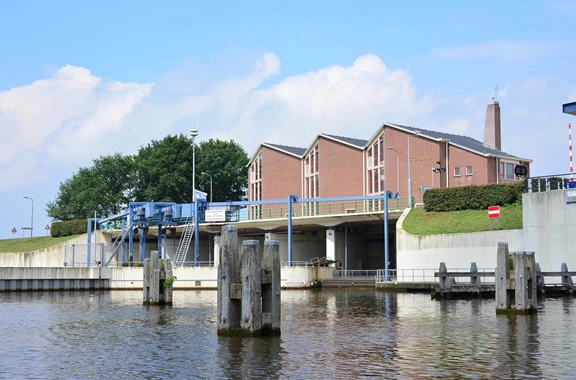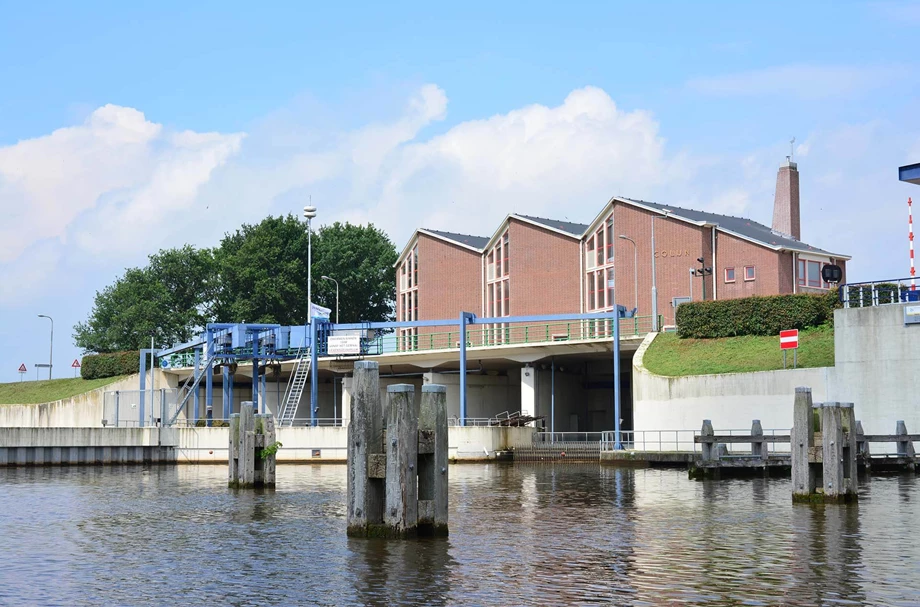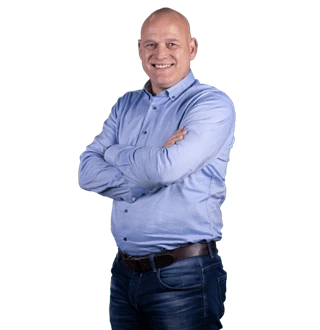


The Dutch province of Flevoland lies metres below sea-level. That’s why rain and seepage need to be removed from the polder, some 6 metres up. And that’s the reason Flevoland is drained continuously by seven huge pumping stations. The quantity of energy involved in this is as great as the energy consumption of 4,000 households.
Regional water authority Zuiderzeeland has launched the ‘Energy & pumping’ project to make the polder drainage sustainable. Royal Eijkelkamp has fitted one of the pumping stations, Colijn with flow-rate measuring equipment to this end. It’s a first!
Albert Koffeman, Engineer/Pumping Station Manager at Regional Water Authority Zuiderzeeland, explains: “Ultimately, it comes down to CO2 reduction. Of all the energy we use as a regional water authority, 65% goes towards Flevoland’s drainage. If we could save on this, or if we could use renewable energy for it, that would have a positive effect on the Regional Water Authority’s CO2 emissions. In doing so, we would contribute to a more future-proof Flevoland.”
“In fact, we have turned the Colijn pumping station into a test bed. We are constantly considering how to improve our processes, with sustainability as the objective. To monitor the pumping process properly, we approached Royal Eijkelkamp. We did some engineering with Royal Eijkelkamp, and we developed a measuring system based on the transit time method and equipment from NIVUS."
"This measuring system lets us monitor the flow rate of one of the three pumps installed in the pumping station. It’s an enormous flow rate: 450 cubic metres per minute. We use 8 NIVUS sensors mounted in the delivery tunnel to perform these measurements."
“Our measuring system is already operational and the results are truly spectacular. We have a view of the displacement of this pump per minute, per hour and per day, down to one decimal place. This data will soon be added to our database and will be used to prepare graphs and reports, and for testing purposes.”
The results of the measuring system are truly spectacular

“We previously calculated the flow rate. Now we measure it, which is a huge difference. Calculations were performed based on the original pump curves from the pump manufacturer, and based on a 1996 measurement using a flow-rate meter by Ott. The advantage of the transit time method is that it’s a contactless measurement. An audio signal is sent out through the water, and you work with that."
“The transit time principle is ideal for permanent measurement systems where you want to monitor the flow rate accurately under various conditions. So previously we used calculations based on pump curves. However, these are based on measurements taken under optimum conditions, and you don’t always have that during normal operations. For instance duckweed could be transported, and similar."
“The flow-rate measuring system we now use is a result of extremely good collaboration between the Regional Water Authority and Royal Eijkelkamp, despite us not having seen each other often or much. Two sessions was all it took. We needed someone with a great deal of knowledge of what they manage, and who knows what they want. And at Royal Eijkelkamp they knew very well indeed what was possible, and what could be delivered. The staff of Royal Eijkelkamp also have a very practical orientation, and they know how to tackle things."
“I think we have achieved a Dutch first together. That’s because I don’t believe any other flow-rate meter system has been installed in the tunnel of such a large pump which is pumping between 460 and 480 cubic metres a minute. And we can now measure this with enormous precision.”
Regional Water Authority Zuiderzeeland is the water manager in Flevoland and a small part of Friesland and Overijssel. In this area, Regional Water Authority Zuiderzeeland is responsible for all the dykes, waterways, pumping stations and water purification plants. The water board thus ensures safety and sufficient and clean water.

Need help for your soil or water related project? Our specialist Erik is happy to help.